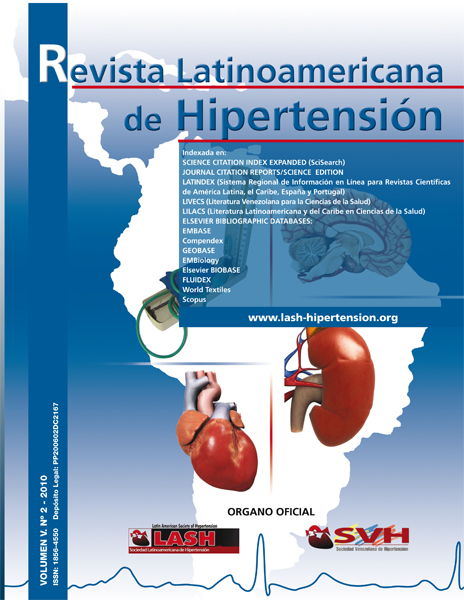Hábito tabáquico y enfermedad cardiovascular
Palabras clave:
enfermedad cardiovascular, factor de riesgo, habito tabáquico, cardiovascular disease, risk factor, smokingResumen
El habito tabáquico es considerado un factor de riesgo para varias enfermedades especialmente la enfermedad cardiovascular. El habito tabáquico ha sido relacionado con la aterosclerosis desde la disfunción endotelial temprana hasta la aparicióndel evento coronario agudo.Tanto el fumador activo como el pasivo están expuestos a riesgo cardiovascular, y se piensa que hay una relación directa y dosis-dependiente con la exposición al humo del cigarrillo. Este hecho, sin embargo es debatible ya que estudios clínicos experimentales recientes han demostrado que existe una relación no lineal entre la exposición al humo del cigarrillo y la enfermedad cardiovascular. Los componentes tóxicos del humo del cigarrillo y los mecanismos que lo relacionan con la enfermedad cardiovascular son poco conocidos, pero se sabe que el humo del cigarrillo incrementa el proceso inflamatorio, trombótico y la oxidación de las lipoproteínas de baja densidad. Recientes estudios apoyan la hipótesis de que la exposición al humo del cigarrillo incrementa el estrés oxidativo como un mecanismo potencial para la iniciación de la disfunción cardiovascular.Estudios epidemiológicos han establecido que el consumo de cigarrillo se ha relacionado a un incremento de hasta 2.5 veces mayor riesgo para enfermedad arterial coronaria por encima de los no fumadores, del mismo modo se demostró en cuanto a pronóstico a largo plazo que se incrementa de manera significativa el riesgo de re-infarto en aquellos pacientes que continúan con el hábito luego de dicho evento, comparado con sujetos fumadores que después del primer infarto dejaron de fumar. De esta forma, la evidencia que relaciona la exposición al humo del cigarrillo con la enfermedad cardiovascular está claramente presentada, todavía los componentes específicos del humo del cigarrillo y los mecanismos responsables para su asociación no han sido dilucidados.Cigarette smoking is considered a risk factor for many diseases especially for cardiovascular disease. Cigarette smoking it has been related with atherosclerosis from the endothelial dysfunction until the appearance of an acute coronary event.Both the active smoker as the passive are exposed to cardiovascular risk, and it is thought there are a direct relationship and dependent dose with the exhibition to the smoke of the cigarette. This fact however is since debatable because recent experimental clinical studies they have demonstrated that a non lineal relationship exists among the exhibition to the smoke of the cigarette and the cardiovascular illness. The toxic components of cigarette smoke and the mechanisms that relate it with the cardiovascular disease are largely unknown, but it is known that the smoke of the cigarette increases the inflammatory process, the thrombosis and the oxidation of low density lipoprotein cholesterol. Recent studies support the hypothesis that the exhibition to the smoke of the cigarette increases the oxidative stress as a potential mechanism for the initiating cardiovascular dysfunction.Epidemiological studies have been established that the cigarette consumption has been related to an increment of up to 2,5 times more risk for cardiovascular disease than the non smokers. Furthermore, was demonstrated as for long term this risk factor predicts that is increased in a significant way the risk of heart attack in those patients that continue with this habit after this event, compared with smokers that stopped to smoke after the first acute coronary event. This way, the evidence that relates the exhibition to the smoke of the cigarette with the cardiovascular illness this clearly supported, but still the specific components of the smoke of the cigarette and the responsible mechanisms for their association have not been elucidated.
Descargas
Los datos de descargas todavía no están disponibles.
Descargas
Publicado
2012-08-24
Número
Sección
Artículos

